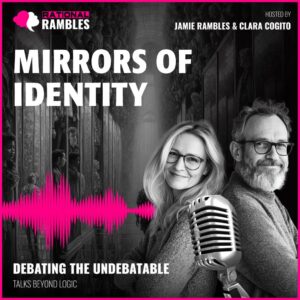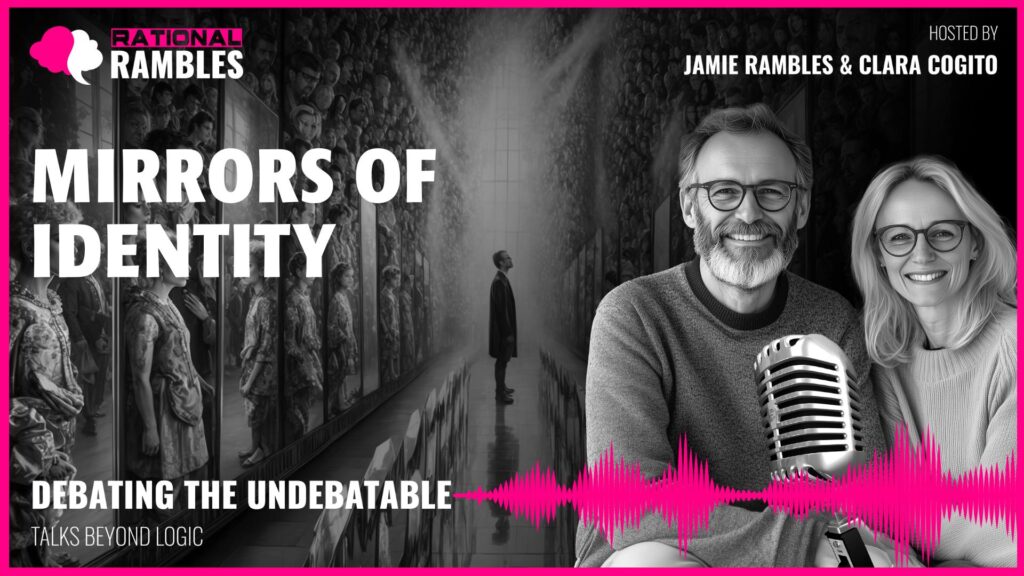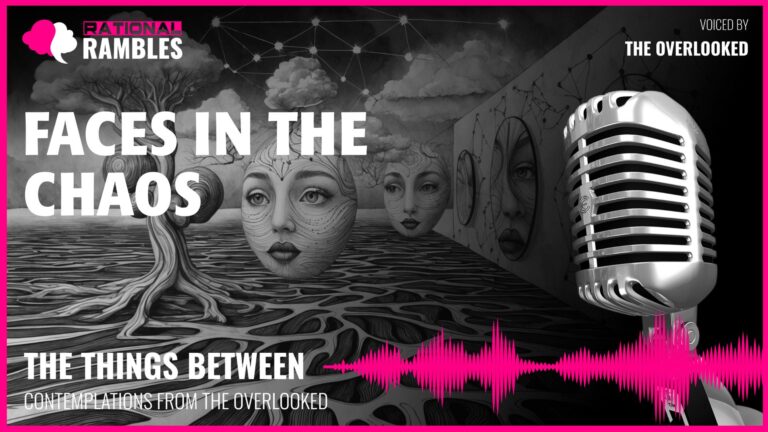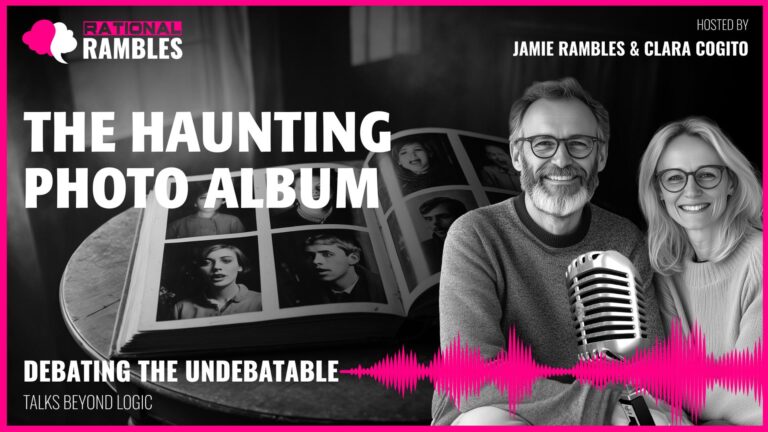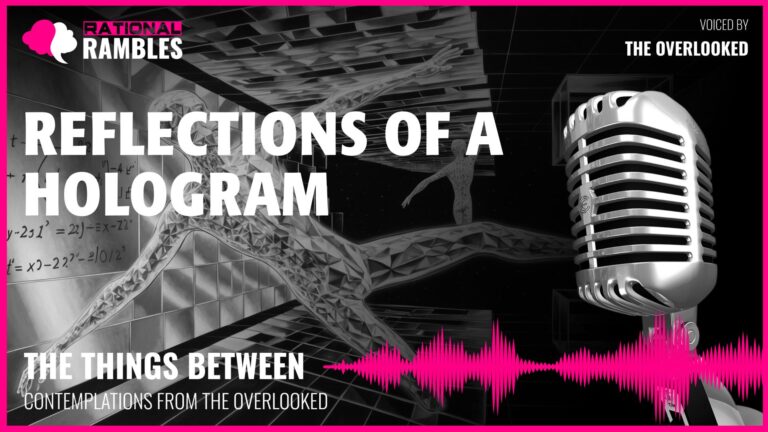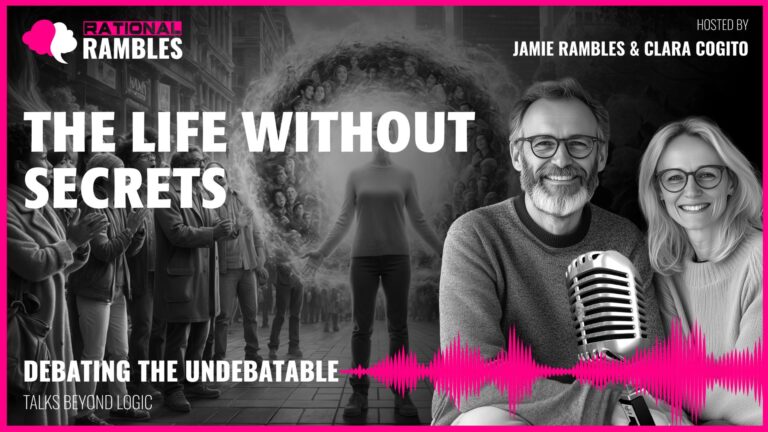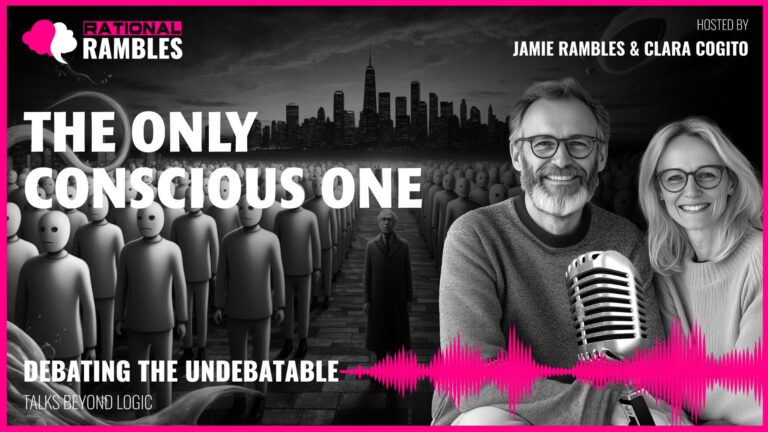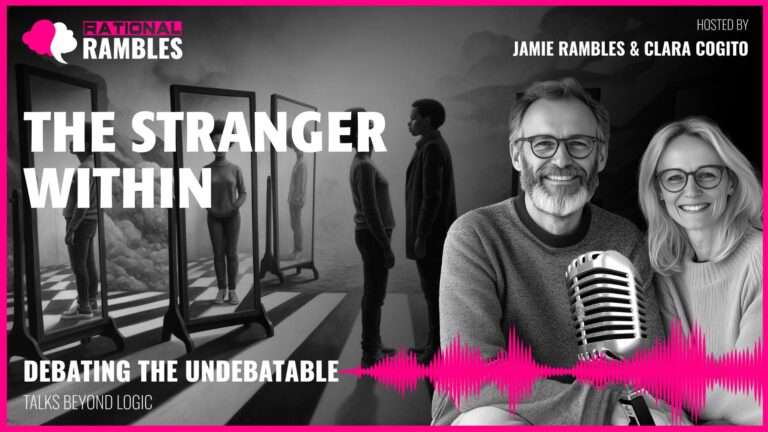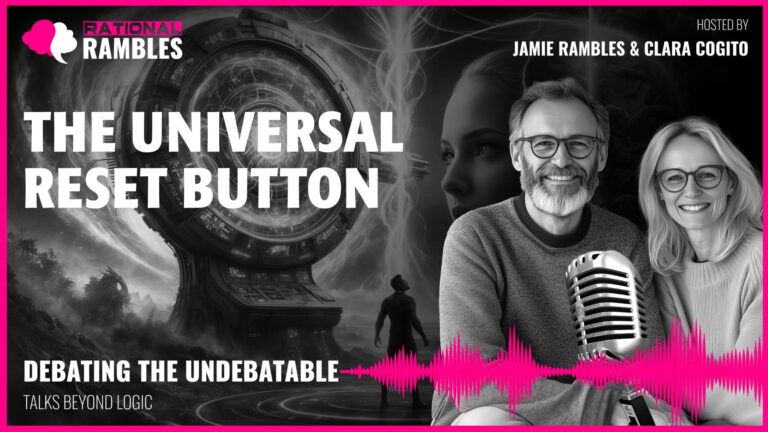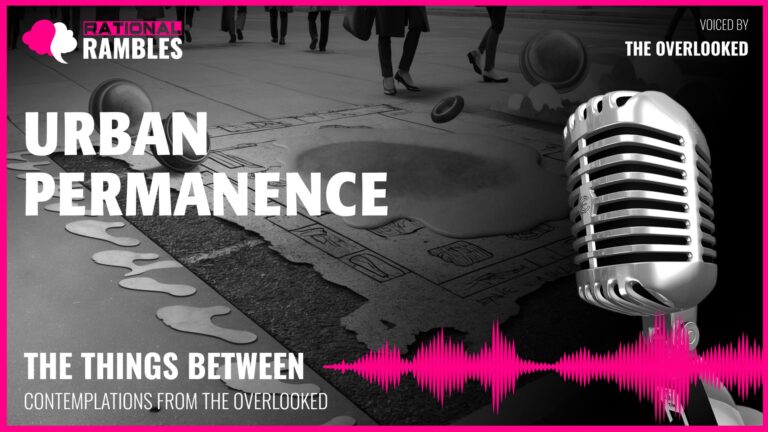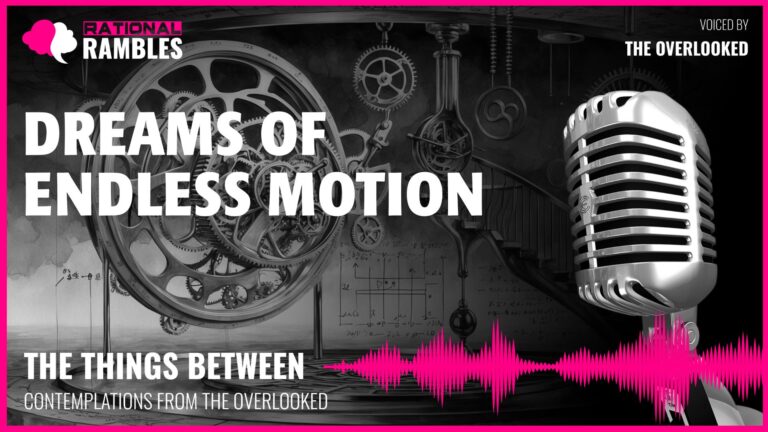Mirrors Of Identity: The Self Between Originality and Reflection
Introduction: The Identity Paradox
Standing between two facing mirrors creates a startling visual effect: an infinite regression of reflections stretching seemingly forever into the distance. This common physical phenomenon serves as a powerful metaphor for one of the most persistent questions in human understanding: Who are we, really? Are we original, autonomous beings with essential, core identities? Or are we merely composites of reflections—amalgamations of influences, relationships, and social mirrors that show us back to ourselves?
This philosophical puzzle takes us to the heart of what it means to be human. It challenges our intuitive sense that there is something original and authentic within us—a true self that exists independently of how others see us or shape us. Yet when we attempt to locate this original self, we encounter a troubling regression: every aspect of our identity seems traceable to external influences. Our values are shaped by our cultures, our personalities molded by early relationships, our self-concepts formed through countless interactions.
This article explores the tension between originality and reflection in human identity. Rather than settling for a simplistic either/or answer, we will examine how identity might be understood as an emergent property that transcends this apparent dichotomy. Drawing on insights from philosophy, psychology, neuroscience, and cross-cultural research, we’ll investigate how selfhood emerges through multiple interconnected processes—from embodied experience to cultural narratives, from pre-reflective consciousness to complex social reflections.
The Development of Self: Mirroring and Beyond
The question of originality versus reflection isn’t merely abstract philosophical speculation—it’s empirically observable in human development. Infants begin forming their sense of self through interactions with caregivers, particularly through what developmental psychologists call “mirroring.” When a baby smiles and a parent smiles back, when a child reaches out and an adult responds, these countless micro-interactions form the foundation of self-awareness.
This early developmental process seems to confirm the “reflection” theory of identity. As the pediatrician and psychoanalyst D.W. Winnicott noted, “The mother’s face is the first mirror.” Before physical mirrors enter a child’s experience, they see themselves reflected in the responses of others. This immediate feedback system helps children develop emotional regulation, social understanding, and the crucial sense that they exist as distinct beings in the world.
Beyond Simple Reflection
Yet research in developmental psychology suggests there’s more to identity formation than simple mirroring. Even newborns show distinct patterns of temperament and response—some are naturally more reactive, some more placid, some more attentive to certain types of stimuli. These individual differences exist before extensive social mirroring has occurred, suggesting something like a biological foundation for individuality.
Moreover, the mirroring process itself is not merely passive reception of reflections. As Winnicott emphasized, good caregiving involves more than just reflecting back exactly what is perceived in the child. It involves recognition—seeing something in the child that is genuinely theirs and validating it. This distinction between mere reflection and active recognition introduces a crucial nuance to our understanding of identity formation.
Agency in Identity Formation
As development continues, children become increasingly active participants in their own identity formation. Even young children show preferences that aren’t simply mirrors of their environment. By adolescence, this selective process becomes quite pronounced, with young people actively trying on different identities, rejecting some influences while embracing others.
This selective process suggests something beyond mere reflection. It points to an active filtering or organizing principle that exerts influence over which reflections become incorporated into one’s sense of self. While this selective capacity is itself shaped by prior influences, creating a potential regression problem, it nevertheless introduces an important element of agency into identity formation.
The Philosophical Problem: Regression and Foundation
From a philosophical perspective, the question of original versus reflected identity presents a challenging regression problem. If our identities are shaped by prior influences, and our capacity to choose which influences to incorporate is itself shaped by even earlier influences, where does the chain begin? Is there ever a point where we can identify something genuinely original that isn’t itself a product of reflection?
The Bundle Theory and Its Limitations
David Hume’s bundle theory of the self offers one approach to this problem. Hume suggested that what we call the “self” is merely a collection of perceptions without any substantive core identity behind them. On this view, searching for an original identity beneath all reflections is futile—there is only the bundle of experiences, with no essential “self” to be found.
Yet this view struggles to account for the psychological continuity most people experience. If there is no underlying thread connecting our experiences, why do we feel a consistent sense of being the same person across time and different contexts? The bundle theory seems to dismiss too easily the phenomenological experience of selfhood that most humans share.
The Ship of Theseus and Identity Persistence
The ancient philosophical puzzle of the Ship of Theseus offers a helpful analogy for thinking about identity persistence. If every plank of a ship is gradually replaced over time, is it still the same ship? Similarly, if every aspect of our identities transforms through reflection and experience, do we remain the same person?
This puzzle suggests that identity might be understood not as a fixed substance but as a pattern or form that persists through change. Our identities, like the ship, undergo constant reconstruction yet maintain a recognizable continuity. This pattern-based approach to identity offers a way of understanding persistence without requiring an unchanging essential core.
Embodiment and Pre-reflective Identity
While much of our discussion focuses on psychological and social dimensions of identity, embodiment offers another crucial perspective. Our physical existence provides a kind of continuity and boundary to identity that isn’t purely reflective. Before conceptual self-understanding develops, we experience ourselves as embodied beings with specific capacities and limitations.
The Body as Foundation
Phenomenologists like Maurice Merleau-Ponty emphasize that we are our bodies, not just minds reflected in social mirrors. Our physical interaction with the world provides a primary form of knowledge that precedes intellectual reflection. Proprioception—our sense of our body in space—gives us a first-person perspective that is inherently “ours” before any social reflection.
This embodied dimension offers a potential foundation for identity that isn’t reducible to social reflections. Even if our understanding and experience of our bodies are culturally mediated, the raw fact of having a particular body with specific capacities provides a continuous thread through our existence.
Cultural Mediation of Embodiment
Nevertheless, our experience of our bodies is significantly mediated by cultural frameworks. Different cultures have varied relationships with physical sensations—what constitutes comfort, appropriate touch, or how emotions are physically expressed varies tremendously across societies. Research on cultural differences in somatization—how psychological distress manifests physically—reveals how deeply cultural factors influence even our seemingly “raw” bodily experiences.
This cultural mediation creates a complex interplay between pre-reflective embodied experience and reflective understanding. Our bodies provide a foundation for identity that precedes reflection, yet our understanding and experience of our bodies are shaped by cultural reflections. This suggests that even at the level of embodiment, originality and reflection are intertwined rather than opposed.
Memory, Narrative, and the Reconstructive Self
Our identities seem inextricably linked to our autobiographical narratives—the stories we tell about who we are and how we came to be. Yet memory is notoriously reconstructive rather than reproductive. Each time we recall an event, we essentially rebuild it, potentially incorporating new elements or emphases.
The Malleability of Memory
Research by Elizabeth Loftus and others has demonstrated how easily memories can be altered through suggestion, reframing, or integration with new information. This malleability introduces another “unreliable mirror” into identity formation—our own memories function less as accurate recordings and more as creative reconstructions influenced by our current circumstances, beliefs, and social contexts.
This reconstructive nature of memory might seem to further undermine the possibility of an original, authentic identity. If even our most personal narratives are constantly being rewritten, what stable foundation could exist for an original self?
Patterns of Reconstruction
Yet there’s an important observation to be made about memory reconstruction: while memories are malleable, people tend to show consistent patterns in how they reconstruct their experiences. Some individuals consistently emphasize agency and resilience in their narratives, while others focus more on emotional impact or relational dimensions. These signature patterns in memory reconstruction may themselves reveal something fundamental about identity.
This insight aligns with philosopher Paul Ricoeur’s concept of narrative identity, where the self emerges through the active interpretation of experiences. Identity isn’t about discovering an original, uncontaminated core self, but about recognizing patterns in how we integrate and make meaning from our experiences—including how we typically distort or emphasize certain elements.
Narrative Coherence and Well-being
Research by psychologist Dan McAdams on life narratives suggests that these story patterns are remarkably stable over time and predictive of psychological well-being. Individuals develop characteristic “narrative tones” and themes that persist even as the content of their stories evolves. These consistent patterns of narrative construction suggest something foundational about identity that transcends the particular reflections that constitute its content.
This perspective shifts our question in an important way: instead of asking whether there’s an original identity beneath all the reflections, we might ask whether certain patterns of reflection themselves constitute identity. If I consistently interpret experiences through particular themes—say, overcoming obstacles or seeking connection—isn’t that patterning itself a kind of signature, even if the raw materials come from elsewhere?
Digital Identity and Hyper-Reflection
In our contemporary digital landscape, the question of original versus reflected identity takes on new dimensions. Social media platforms create environments of what might be called “hyper-reflection,” where identities are curated, performed, and validated through likes, comments, and shares. This intensifies the mirror problem, potentially creating further distance from any sense of original identity.
The Curated Self
Digital platforms encourage users to curate their self-presentation based on what receives positive feedback. This creates a feedback loop where identity becomes increasingly shaped by external validation. The “selfie” becomes both literal and metaphorical—we present ourselves to be seen, and what is seen and validated shapes what we continue to present.
This dynamic raises concerns about authenticity in the digital age. If our online personas are carefully constructed performances designed to elicit specific responses, have we moved even further from any authentic core identity?
The True Self Perception
Interestingly, research suggests many people report feeling their “true self” is different from their online presence. This perceived gap between digital performance and authentic identity suggests people maintain some internal reference point—some sense of authenticity that feels separate from the reflections they produce online.
This distinction points to a kind of meta-awareness about identity performance. We’re not only being shaped by reflections but are conscious of the very process. This awareness introduces a reflexive dimension to identity that complicates the simple original/reflected dichotomy.
Flow States and Transcending Self-Consciousness
The psychological concept of “flow” offers an intriguing perspective on identity that temporarily sidesteps the original/reflected dichotomy. Psychologist Mihaly Csikszentmihalyi describes flow as a state of complete immersion in an activity where self-consciousness temporarily dissolves. During flow experiences, people often report feeling most “themselves” precisely when they’re least reflectively aware of themselves.
Beyond Self-Reflection
Flow states suggest that perhaps authenticity isn’t found through interrogating our reflections but in temporarily transcending our self-consciousness about them. When deeply engaged in meaningful activity—whether creating art, solving problems, or connecting with others—our preoccupation with who we are recedes, and a different kind of identity experience emerges.
This phenomenon doesn’t resolve the ontological question of original versus reflected identity, but it suggests that our lived experience of authenticity might transcend this conceptual opposition. Being “most ourselves” might occur precisely when we’re not caught in either asserting originality or analyzing reflections.
The Paradox of Effortless Authenticity
There’s a paradox here worth noting: deliberate attempts to be authentic often produce experiences that feel performative or inauthentic, while moments of unselfconscious engagement often feel most genuine. This suggests that authenticity might be an emergent property that arises not through asserting an original self against reflections, but through integrating reflective and pre-reflective dimensions of experience in engaged activity.
This paradox echoes ancient wisdom traditions that suggest the self is found through forgetting the self. As the Zen saying goes: “Before enlightenment, chop wood, carry water. After enlightenment, chop wood, carry water.” The authentic self emerges not through self-assertion but through immersion in meaningful engagement with the world.
Cross-Cultural Perspectives on Selfhood
Our framing of identity as a tension between originality and reflection may itself reflect culturally specific assumptions rather than universal human experience. Cross-cultural research reveals profound differences in how selfhood is conceptualized and experienced across societies.
Independent and Interdependent Self-Construals
Psychologists Hazel Markus and Shinobu Kitayama distinguish between independent and interdependent self-construals, roughly mapping onto Western versus East Asian conceptions of selfhood. People in more individualist societies (like the United States) often define themselves primarily through personal attributes and distinctions from others, while those in collectivist societies (like Japan) more often emphasize social roles and group memberships.
These differences appear in multiple domains, from autobiographical memory to visual perception. When asked to describe themselves, Americans typically list personal traits and accomplishments, while Japanese participants more often mention social roles and relationships. These differences suggest that the very framework for understanding identity varies significantly across cultures.
Authenticity Across Cultures
The modern Western preoccupation with authenticity and discovering one’s “true self” emerged historically rather than being a timeless human concern. Philosopher Charles Taylor traces how this authenticity ideal developed in Western thought, particularly since the Romantic period. The very question of distinguishing original from reflected aspects of identity may be culturally specific rather than universal.
In cultures with more interdependent conceptions of self, authenticity might be found precisely in fulfilling one’s relational roles well, rather than in discovering some identity separate from social reflections. Research on well-being across cultures supports this—for individuals with interdependent self-construals, fulfilling social obligations often correlates more strongly with psychological well-being than expressing personal preferences does.
Multiple Cultural “Solutions” to Identity
Rather than seeking a universal answer to the question of identity, we might recognize different cultural “solutions” to the universal human need for a coherent sense of self. Western philosophical traditions, with their emphasis on individuation and autonomy, capture something important about human experience, while Eastern traditions, with their emphasis on interdependence and harmony, capture something equally important but different.
This pluralistic approach suggests that the truth of human identity might be too multifaceted to be adequately represented by any single conceptual model, whether it emphasizes originality or reflection. Different cultural frameworks each illuminate aspects of human experience that others might miss.
Toward an Integrative Understanding: Identity as Emergent
The evidence from multiple disciplines suggests that identity might be best understood as an emergent property that transcends the original/reflected dichotomy. In complex systems theory, emergence refers to properties that arise from interactions between components but cannot be reduced to those components. Identity might similarly emerge from countless interactions yet have properties irreducible to any of its components alone.
Multi-Layered Identity
We might conceptualize identity as existing at multiple interconnected levels—from embodied experience to cultural narratives—with both unique and reflective elements intertwining at each level. Some philosophical traditions distinguish between “ipse-identity” (selfhood) and “idem-identity” (sameness over time). The former connects more to embodied experience, while the latter emerges through narrative continuity.
This multi-layered approach finds support in psychological research distinguishing between implicit and explicit self-concept. Our implicit sense of self operates largely below conscious awareness and shows remarkable stability across situations, while our explicit self-concepts—the stories we tell about who we are—are more malleable and context-dependent.
Identity as Pattern Rather Than Substance
Rather than locating identity in some unchanging substance or essence, we might understand it as a distinctive pattern that persists through change. Like a musical theme that allows for improvisation while maintaining recognizable structure, our identities involve consistency amid variation.
This pattern-based understanding accommodates both stability and change in identity. It explains how we can undergo significant transformations through major life transitions yet maintain a sense of continuity. The pattern itself evolves, but in ways that maintain recognizable structure over time.
The Intersubjective Space of Identity
Contemporary relational psychology locates identity not entirely within the individual but in the dynamic intersubjective space between self and others. Rather than seeing the self as contained within individual boundaries, theorists like Stephen Mitchell view it as continuously created and recreated within relationships.
This intersubjective approach doesn’t reduce identity to mere reflection but recognizes how it emerges through dynamic interaction. Different relationships activate different aspects of ourselves—we may be serious and reflective with one person, playful and spontaneous with another. Yet most people experience a sense of coherence across these variations, suggesting an underlying pattern or theme that accommodates contextual variation.
Practical Implications: Living with Complexity
This integrative understanding of identity has significant implications for how we approach questions of authenticity, personal growth, and psychological wellbeing in our lives. Rather than anxiously questioning whether there’s an “original me” beneath all reflections, wisdom might lie in embracing the beautiful complexity of how our distinct ways of reflecting, integrating, and transforming create identities that are simultaneously shared and singular.
Beyond the Authenticity Trap
The pressure to discover and express an “authentic self” can itself become a psychological trap that increases self-consciousness and undermines genuine experience. If identity emerges through complex processes rather than residing in some original core, then authenticity might be redefined as coherence across different dimensions of experience rather than purification from external influence.
This perspective liberates us from impossible quests for pure originality while still honoring the importance of integrity and genuine self-expression. We can acknowledge our inherently relational nature without reducing ourselves to mere composites of external influences.
Identity Development as Integration Rather Than Discovery
Personal growth might be approached less as a process of discovering a pre-existing authentic self and more as integrating diverse aspects of experience into coherent patterns. This integration involves both continuity and transformation—maintaining recognizable patterns while allowing them to evolve through new experiences.
Psychotherapy and other forms of personal development work often involve precisely this integrative process. Rather than uncovering a “true self” hidden beneath false layers, effective therapy typically helps people develop more coherent, flexible, and inclusive self-narratives that can accommodate both continuity and change.
Relational Identity and Ethical Responsibility
Recognizing the inherently relational nature of identity highlights our ethical responsibility in shaping each other’s selfhood. If we participate in each other’s identity formation through recognition and reflection, then how we see and respond to others becomes an ethical matter of profound importance.
This perspective emphasizes the importance of creating relationships and communities that recognize each person’s uniqueness while supporting their ongoing development. It suggests that healthy identity formation requires environments that provide both validation of existing patterns and space for growth and transformation.
Conclusion: Both/And Rather Than Either/Or
The question of whether we have original identities or are merely collections of reflections presents a false dichotomy. The evidence from psychology, philosophy, neuroscience, and cultural studies suggests a more complex reality where we are simultaneously reflecting and creating, mirroring and originating, in an ongoing dance that constitutes who we are.
Our identities emerge through multiple interconnected processes—from embodied experience to cultural narratives, from pre-reflective consciousness to complex social reflections. At each level, both unique and reflective elements intertwine, creating patterns that are neither entirely original nor merely derivative.
This emergent understanding offers a richer conceptualization that honors the complexity of human experience. It validates both our sense of individual uniqueness and our fundamental connectedness to others. Rather than anxiously questioning whether there’s an “original me” beneath all reflections, perhaps wisdom lies in appreciating how our distinctive ways of integrating experience create identities that are simultaneously shared and singular.
In the end, the hall of mirrors metaphor transforms. We are not simply caught between opposing reflections stretching to infinity, nor are we solid objects merely reflected in passive mirrors. Instead, we might be understood as active, creative participants in an ongoing process where reflection itself becomes a generative force, creating patterns as unique as they are connected to the broader human experience.
References and Further Reading
Csikszentmihalyi, M. (1990). Flow: The Psychology of Optimal Experience. Harper & Row.
Hume, D. (1739/2000). A Treatise of Human Nature. Oxford University Press.
Loftus, E. F. (2005). Planting misinformation in the human mind: A 30-year investigation of the malleability of memory. Learning & Memory, 12(4), 361-366.
Markus, H. R., & Kitayama, S. (1991). Culture and the self: Implications for cognition, emotion, and motivation. Psychological Review, 98(2), 224-253.
McAdams, D. P. (2001). The psychology of life stories. Review of General Psychology, 5(2), 100-122.
Merleau-Ponty, M. (1945/2012). Phenomenology of Perception. Routledge.
Ricoeur, P. (1992). Oneself as Another. University of Chicago Press.
Taylor, C. (1989). Sources of the Self: The Making of the Modern Identity. Harvard University Press.
Winnicott, D. W. (1971). Mirror-role of mother and family in child development. In Playing and Reality (pp. 111-118). Routledge.


